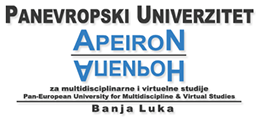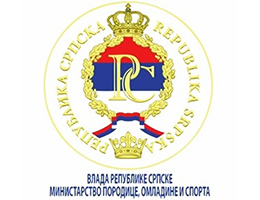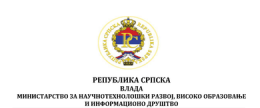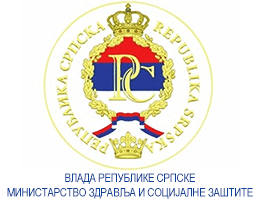The Mediating Effect of Social Physique Anxiety in the Relationship Between Objectified Body Consciousness and Body-Esteem among Belly Dance Participants
Volume 14, Issue 2 (2024)
Volume 14, Issue 2 (2024)
The Mediating Effect of Social Physique Anxiety in the Relationship Between Objectified Body Consciousness and Body-Esteem among Belly Dance Participants
Apstrakt:
The purpose of this study was to examine the mediating effect of social physique anxiety in the relationship
between objectified body consciousness and body-esteem among a sample of belly dance participants. The subjects consisted
of 347 adult women (aged 20 and older) who participated in belly dancing in Korea. In July 2022, the convenience
sampling and self-evaluation writing methods were used as URL delivery methods through an online Google questionnaire.
For data analysis, confirmatory factor analysis, reliability analysis, frequency analysis, and Baron & Kenny’s (1986)
mediator regression analysis were conducted using SPSS 26 and AMOS 26 software. The results are as follows. Social
physique anxiety completely mediates the relationship between physical surveillance and body-esteem (a sub-factor of
objectified body consciousness), but it does not have a mediating effect on the relationship between physical shame and
body-esteem. Meanwhile, it partially mediates the relationship between control beliefs and body-esteem. Based on these
findings, belly dance instructors must make efforts to develop, organize, and implement programs that help correct objectified
body consciousness and foster positive and self-directed body-esteem by reducing social physique anxiety. It is hoped
that the results of this study can be used as a theoretical basis for participating in belly dance as well as practical/basic
data for the development and growth of belly dance on a larger scale.
Ključne riječi:
Belly dance, Objectified Body Consciousness, Body-Esteem, Social Physique Anxiety, Leisure Activities
Puni tekst:
Reference:
Kang D. Y. (2013). The Settlement Process and Tasks of Bellydance in Korea. Unpublished master’s thesis, Graduate school at Kyungsang
University.
Kang L.W. (2024). Effects of objectified body consciousness of dance majors on esteem and eating attitudes. Unpublished master’s thesis,
Graduate school of Sookmyung Women’s University.
Kim G.S. (2010). Structural equation model analysis. Seoul: Han na-rae Publishing Company.
Kim D. E. (2008). The Effects of Participation in Belly Dance and the Satisfaction about Programs. Unpublished master’s thesis, Graduate
School of Yonsei University.
Kim D. J. (2005). The Relationships among Squash Participation, Body-Esteem and Job Satisfaction in Workers. Journal of the Korean Sports
Association, 44 (6), 943-951.
Kim M. K. (2023). The Effect of Pilates participant’s Objectified Body Consciousness on Body Esteem and Continuation Intention. Unpublished
master’s thesis, Dongguk University Graduate School of Education.
Kim Y. S. (2014). Verification of Mediating Effects of Body Image Self Discrepancy in Dance Major High School Students in the Relationship
between Public Self Consciousness and Social Physique Anxiety. Unpublished master’s thesis, Graduate School of Seoul National
University.
Kim Y. R. (2009). A study on Development and Present Situation of Korean Practical Dance. Unpublished doctoral dissertation, graduate
school of Kookmin University.
Kim Y. R. (2011). A Study about the Values of Practical Dance in Contemporary Society. Journal of the Korean Entertainment Industry Association,
5 (4), 23-31
Kim, W., Ryu, Y., & Park, E. (2007). The Korean version of objectified body consciousness scales (K-OBCS): Development and validation.
Korean Journal of Psychology, 26(2), 329-349.
Kim J. S. (2020). Writing a thesis in 30 days. Goyang: Glider.
Kim H. J., Kim M. Y. & Kim D. J. (2014). Development of Social Physique Anxiety scale for Female Undergraduate. Journal of the Korean
Women’s Sports Association, 28 (3), 143-165.
Nam I. S. (2009). The Effect of Social Physique Anxiety on physical self-concept, Fear of Negative Evaluation, Depression of Female University
Students in Dance sports class. Journal of the Korean Women’s Sports Association, 23(4), 117-131.
Moon J. S. (2003). A Study for the Relationship between the Internalization and the Body Image of the Socio-Cultural Attitudes According to
Public Self-Consciousness and the Appearance. Unpublished master’s thesis, Graduate school of Ewha Womans University.
Park Y. J. (2021). A Comparative Study on Practical Dance Curriculums in the Academic Credit Bank System of Universities. Unpublished
master’s thesis, Sangmyung University Graduate School of General Studies.
Park E. A. (2003). Cross-Cultural Study of the Effect of Body-Esteem to Subjective Well-being: Korean and U.S. Female College Students.
Journal of the Korean Psychological Association, 22 (2), 35-56.
Park I. H. (2010). The Study of Middle aged Women and Exercise Habits: Structural Model of Social Physique Anxiety, Motivation and Intentio.
Unpublished doctoral dissertation, General graduate school of Sungkyunkwan University.
Park H. Y.. (2013). Verification of relation model among participation motivations on self-management behaviors, self-expression and female
belly dance learners’ leisure satisfaction. Unpublished doctoral dissertation, graduate school of Wonkwang University.
Seo E. H. (2011). A Study on Relationship of Narcissistic Trait, Body Consciousness, Appearance Management Behavior, and Psychological
Utility in Make-up. Unpublished doctoral dissertation, graduate school of Sungshin Women’s University.
Song S. J. (2016). The Effect of Objectified Body Consciousness of Grown-up Women Participating in Yoga Training on Optimism and Selfexpression.
Unpublished master’s thesis, Graduate school of Kangwon University.
Song J. J. (2012). SPSS/AMOS statistical analysis method required for writing a thesis. Gyeonggi: 21C Company.
Yang D. S. (2017). A study on the Experience of Performing Belly Dance as the Leisure Activity of Adult Women. Unpublished master’s thesis,
Sookmyung Women’s University Graduate School of Education.
Yang E. S. (2010). The Mediation Effect of Social Physique Anxiety between Woman Dancers’ Self-Objectification and Body Dissatisfaction.
Journal of the Korean Society of Physical Education Measurement and Evaluation, 12 (1), 107-117.
Yum D. (2018). The Effects of Social Physique Anxiety on Physical Self-efficacy and Performance Confidence of University Students Majoring
in Dance. Master’s thesis unpublished, Dankook University Graduate School of Education.
Oh, H. J. (2014). Effects of the upright body type exercise program on body-esteem, fear of negative evaluation and self-esteem in female
middle school students. Unpublished Master’s Thesis, Graduate School of Silla University.
Lee S.B. (2012). An effect of objectified body awareness of dance major university students on dance performance satisfaction and social behavior.
Unpublished master’s thesis, Kyung Hee University Graduate School of Education.
Lee, S. A. (2009). The influence of objectified body consciousness based on the presence of sport participation on the psychological emotion
and self-value (Unpublished doctoral dissertation). Kyunghee University, Seoul, Korea.
Lee, Y. J. (2004). The influence of belief in body control on appearance satisfaction of US female college students. Journal of the Korean Society
of Clothing and Textiles, 28, 974-982.
Jang Y.W. (2012). Effect of Belly Dance on Blood Lipids and Artery Blood Flow Velocity in Obese Women. Journal of the Korean Academy
of Dance, (27), 135-146.
Jang U. Y. (2021). The Participation in Belly Dance Performance on the Self-Esteem and Satisfaction with Life for Middle-Aged Women. The
Souteast Korea Dance Society, 9(2), 135-155.
Jeong Y. H. (2015). Relationship among objectified body consciousness, participation motivation and body esteem of female university students
participating in leisure-sports. Unpublished doctoral dissertation, Kyunggi University.
Jung H. K. (2018). Analysis of the System Changes in University Pragmatic Dance Education Department. The Korean Journal of Dance, 76
(2), 213-234.
Choi Y. J. (2009). A Study on Influence of Belly Dance Performance for Physical Change and Physical Self-Efficacy in Elementary Female
Schoolers. Unpublished master’s thesis, Ewha Womans University Graduate School of Education.
Han K. A. (2017). The Influence of Social Physique anxiety on the Physical Self-Concept and Psychological Wellbeing among College Dancers.
Unpublished master’s thesis, Kyung Hee University Graduate School of Education.
Bagozzi, R. P., & Yi, Y. (1988). On the evaluation of structural equation models. Journal of the academy of marketing science, 16(1), 74-94.
Hart, E. A., Leary, M. R., & Rojeski, W. J. (1989). The measurement of Social physique Anxiety. Journal of Sports & Exercise Psychology.
11. 94-104.
McKinley, N. M. (1999). Women and objectified body consciousness: Mothers’ and daughters’ body experience in cultural, developmental, and
familial context. Developmental Psychology. 35(3), 760-769.
McKinley, N. M., & Hyde, J. S. (1996). The objectified body consciousness scale: Development and validation. Psychology of women quarterly,
20(2), 181-215.
Mendelson, B. K., Mendelson, M. J., & White, D. R. (2001). Body-esteem scale for adolescents and adults. Journal of personality assessment,
76(1), 90-106.
Spitzack, C. (1990). Confessing excess: Women and the politics of body reduction. Suny Press.
Taylor, S. E. (1989). Positive illusions: Creative self-deception and the healthy mind. Basic Book.
Tucker, L. A. (1981). Internal structure, factor satisfaction, and reliability of the Body Cathexis Scale. Perceptual and Motor Skills, 53(3),
891-896.






